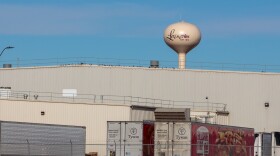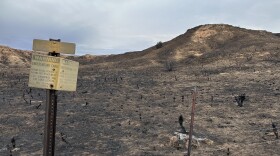Texas will run out of water by 1985 — or at least that was what the experts said back in the 1960s.
That's when Texas lawmakers advanced a plan through the Legislature to save the state's water system. It would have diverted water from the Mississippi River below New Orleans, move it across Louisiana, and then harness nuclear energy to pump that water across the Lone Star State.
The idea was ultimately shot down at the ballot box by voters. But it hasn't died altogether. In fact, those debates of decades gone by continue to echo in current arguments about how to make sure Texas has enough water for our future.
Forrest Wilder, who reports for Texas Monthly, said the modern iteration of this plan is being promoted by State Sen. Charles Perry of Lubbock. The proposal would build a statewide water grid.
"This would be a network of pipelines that would stitch together different regions and move water around to where it's needed," Wilder said. "And a component of this, just like the 1968 plan, would be to get some water from other states, maybe Louisiana, maybe Arkansas, and put it into this water grid, along with a whole bunch of other projects like desalination, pumping water into aquifers and storing it there until it's needed."
Pumping water east to west from Arkansas and Louisiana is a fairly expensive proposition. Most water travels the other way across the state, west to east and downhill towards the Gulf.
Pumping water uphill is expensive, Wilder said. But experts agree that something must be done.
"There's a fairly broad consensus that if we're not in an emergency, we're in a pretty serious situation," he said. "Our water supply is already severely strained. I mean you can just see that. Go look at some of our lakes, look at our rivers. We're already there.
Now looking out longer term, over the next 50 years, the state water plan says that we're gonna need another about seven million acre-feet. That's a lot of water. To give it perspective, currently the whole state uses around 15 to 17 million acre-feet."
Perry's proposal, however, assumes that the state's water plan is lowballing this estimate. Rather, Perry suggests we will need closer to 12 million acre-feet more water by 2050 — rather than seven million additional acre-feet by 2070.
» GET MORE NEWS FROM AROUND THE STATE: Sign up for Texas Standard's weekly newsletters
"That's a heck of a lot more water. And so, given that perceived dire need, there's simply not enough water to get through traditional means. And that's why he's proposing these more exotic efforts, whether that's going out of state or building a bunch of desalination plants or building even more new reservoirs," Wilder said.
"The nub of the debate is not whether we need to find more water. It's really about how much, what's the most bang for our buck, and the least harmful version of securing new water supply."
Some lawmakers are less sure Perry's plan is the right path forward.
"The state water plan contains hundreds and hundreds and hundreds of recommended projects," Wilder said.
"There's folks in the Legislature, probably a majority, that think, 'well, why don't we start there? These have been researched. There's buy-in from stakeholders. Why don't we focus on financing that, rather than going off and trying to chase what may be a much more expensive and politically infeasible project, including getting other states to sell us water.' That's never happened. And so that suggests that it might be pretty difficult to make it happen now."
Copyright 2025 Texas Public Radio







